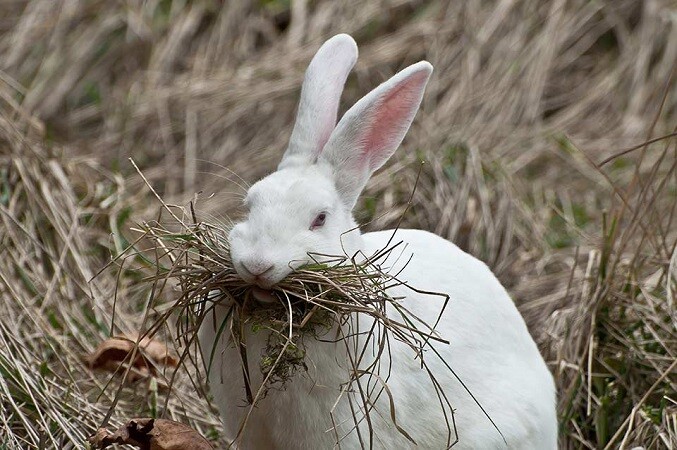

Bucks
The way bucks are fed impacts their semen quality but also their libido. A buck’s voluntary feed intake when less than 5 months old is approximately 170 g / day. If a buck is given a fairly low energy feed, for instance a fattening feed, it is better to feed him ad libitum. Take caution, however, that he does not become too fat as this could negatively impact his breeding performance. With a maternity type of feed or a specific feed designed for males, bucks can be submitted to restricted feeding (around 180 g / day) in order to limit their weight gain. Yet we must ensure that the ingestion level is not too limited otherwise this could reduce their libido, their semen volume and affect the quality of spermatozoa.
Does
Feed quality: The breeding rate should be adjusted depending on the seasons, the litter size, the female’s age and her physical condition. Feed quality also plays a major role in this respect. If the doe has access to a rich diet (forage, a complete feed used in a very restricted way), it is better to wait until weaning to put them back to mating. With a well-balanced and complete feed, the mating delay must be adapted depending on the size of the previous litter: up to 7 days for a 1 to 3- rabbit litter; 10 days for 4 / 6 baby-rabbit litter and 15 days for a 7-baby-rabbit litter.
Restricted feeding: Does may be subject to restricted feeding during the maintenance and gestation phase (minimum 150 g if they are pregnant). It is important to feed them ad libitum at the beginning of lactation because their requirements are doubled during this period (minimum 350g only for suckling does). A nutritional deficiency before mating may reduce the ovulation rate and embryonic viability. A nutritional deficit around the lactation peak will have a negative impact on milk production and hence, on baby rabbits’ weight and viability.
Complementary feed: Using a highly concentrated complementary feed (energy, protein, amino acids, vitamins, trace elements) can help to improve the breeding results. When given at key periods of the cycle, it will contribute to match the doe’s requirements and result in a flushing effect. It can also be distributed to breeding bucks in order to improve their semen quality.
 Contact Jaguza Support
Contact Jaguza Support